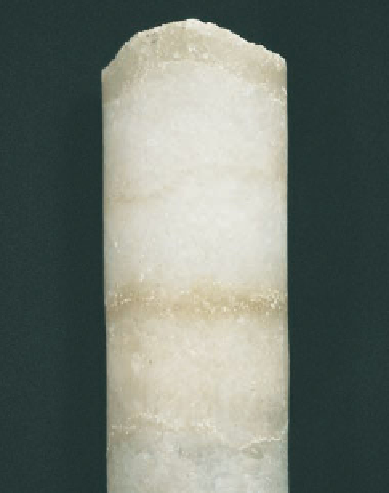Geology Reference
In-Depth Information
◗
Figure 20.11
The Michigan Basin
(d)
d
Limestone from the carbonate facies.
Image not available due to copyright restrictions
(b)
(c)
c
Core of rock salt from the evaporite facies.
b
Cross section of a stromatoporoid colony from the
stromatoporoid barrier reef facies.
detrital deposition resulted from the formation of new
source areas brought about by the mountain-building
activity associated with the Acadian orogeny in North
America (Figure 20.13).
As the Devonian Period ended, a conspicuous change in
sedimentation took place over the North American craton
with the appearance of widespread black shales. In the east-
ern United States, these black shales are commonly called
Chattanooga Shale, but they are known by a variety of local
names elsewhere (for example, New Albany Shale and Antrim
Shale). Although these black shales are best developed from
the cratonic margins along the Appalachian mobile belt to the
Mississippi Valley, correlative units can also be found in many
western states and in western Canada (
◗
Figure 20.15a).
The Upper Devonian-Lower Mississippian black shales
of North America are typically noncalcareous, thinly bedded,
and less than 10 m thick (Figure 20.15b). Fossils are usually
rare, but some Upper Devonian black shales do contain rich
conodont faunas. Because most black shales lack body fossils,
they are difficult to date and correlate. However, in places
where conodonts (microscopic animals), acritarchs (micro-
scopic algae), or plant spores are found, these fossils indicate
that the lower beds are Late Devonian and the upper beds
are Early Mississippian in age.








Search WWH ::

Custom Search